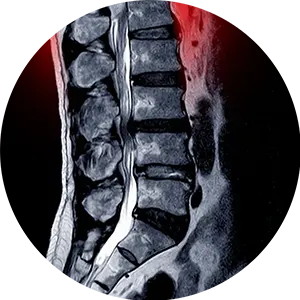Spinal stenosis is a narrowing of the holes where the spinal cord and nerves travel through the spine. These holes get smaller and create pressure on the spinal cord and the nerves exiting the spinal column. Depending on which nerves are affected, spinal stenosis can cause numbness or pain in the neck, back, arms, legs, or shoulders. This condition can happen as a person ages (generally at about 40 years and above).
One of the most common causes for this is when a spinal disc starts to become drier and shrink while the bones and ligaments begin swelling and growing due to arthritis and inflammation. This process will often create stenosis either in the cervical (neck) or lumbar (lower back) regions. Stenosis can be very serious, depending on how compressed the spinal cord or nerves get. In some rare cases, patients will need a surgical consult.


